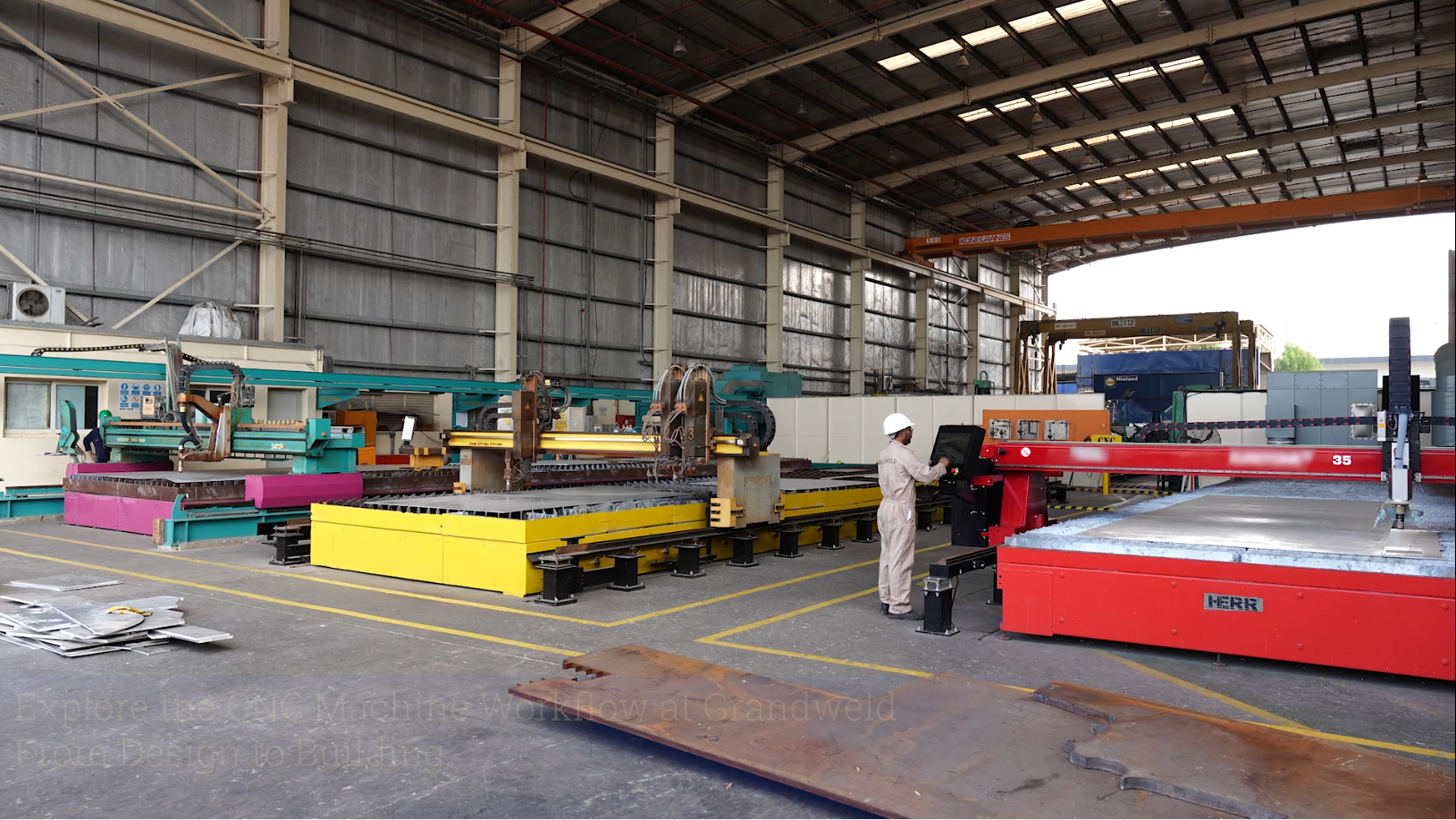Enhancing Precision in Shipbuilding and Repair: How automated CNC Plasma Cutting Technology Optimizes Workflow and Component Fabrication
Introduction:
In the realm of shipbuilding and repair, Grandweld leverages the well-established precision of Computer Numerical Control (CNC) technology to enhance our operational efficiency. While CNC technology is a staple in modern manufacturing, its application in shipbuilding brings a distinct advantage in terms of accuracy and consistency. This blog post explores how Grandweld integrates CNC technology with our engineering processes, utilizing three advanced CNC cutting machines to streamline production from design to assembly.
Design Phase: Crafting Digital Foundations
The whole workflow begins with CAD (Computer-Aided Design) software, where our engineering team crafts detailed 2D ship component drawings. It’s the digital blueprint that sets the stage for our shipbuilding and ship repair process. For Shipbuilding these 2D ship components are derived from detailed 3D models.
Material Optimization: Smart Arrangements for Minimal Waste
Here comes the Nesting software, who strategically organizing drawings on material sheets based on part thickness. This smart arrangement minimizes waste and maximizes the efficient use of materials, a crucial step in our sustainable manufacturing process.
NC Code Generation: Precision Instructions for CNC Machines
Nesting software takes the lead in generating numerical control (NC) codes, acting as digital instructions for our CNC machines. These codes are the guiding hand that ensures our machines cut precisely, maintaining consistency across all components.
Automated Processing: Enhanced Accuracy
Central to our shipbuilding and repair process is the utilization of three CNC machines, employing CNC plasma cutting technology to precisely cut and mark materials. This advanced automation plays a crucial role in enhancing the accuracy and efficiency of our operations. By leveraging CNC plasma cutting, we ensure that every component is crafted to meet our exacting standards, reinforcing our commitment to quality and precision in every aspect of our work.
Quality Assurance: Ensuring Perfection
Following the cutting process, every machined part undergoes thorough quality control and inspection. We scrutinize dimensions, tolerances, and overall quality, ensuring each piece aligns with our specified design requirements. Each part manufactured with CNC technology is tracked throughout the project with unique part numbers for traceability which is a critical part of our planning, project management and QC processes.
Integration with Shipbuilding Processes: Seamlessly Working Together
CNC machining seamlessly integrates with other shipbuilding phases, including welding, assembly, and painting. This cohesive workflow ensures a synchronized production process, where each step complements the other.
Documentation and Traceability: The Backbone of Quality Assurance
We maintain meticulous records for each component, ensuring traceability back to its original design. This rigorous documentation supports our quality assurance processes and fuels continuous improvement.
Operator Expertise: The Human Element
Our CNC machine operators bring expertise and precision to the table, ensuring safe and effective machine operation. Their skill is essential in translating technological capabilities into tangible results.
Conclusion:
At Grandweld, the adoption and integration of CNC technology into our shipbuilding and repair processes underscore our dedication to precision, efficiency, and quality. By combining this established technology with our expert team and integrated engineering practices, we continue to lead in delivering exceptional shipyard solutions.



